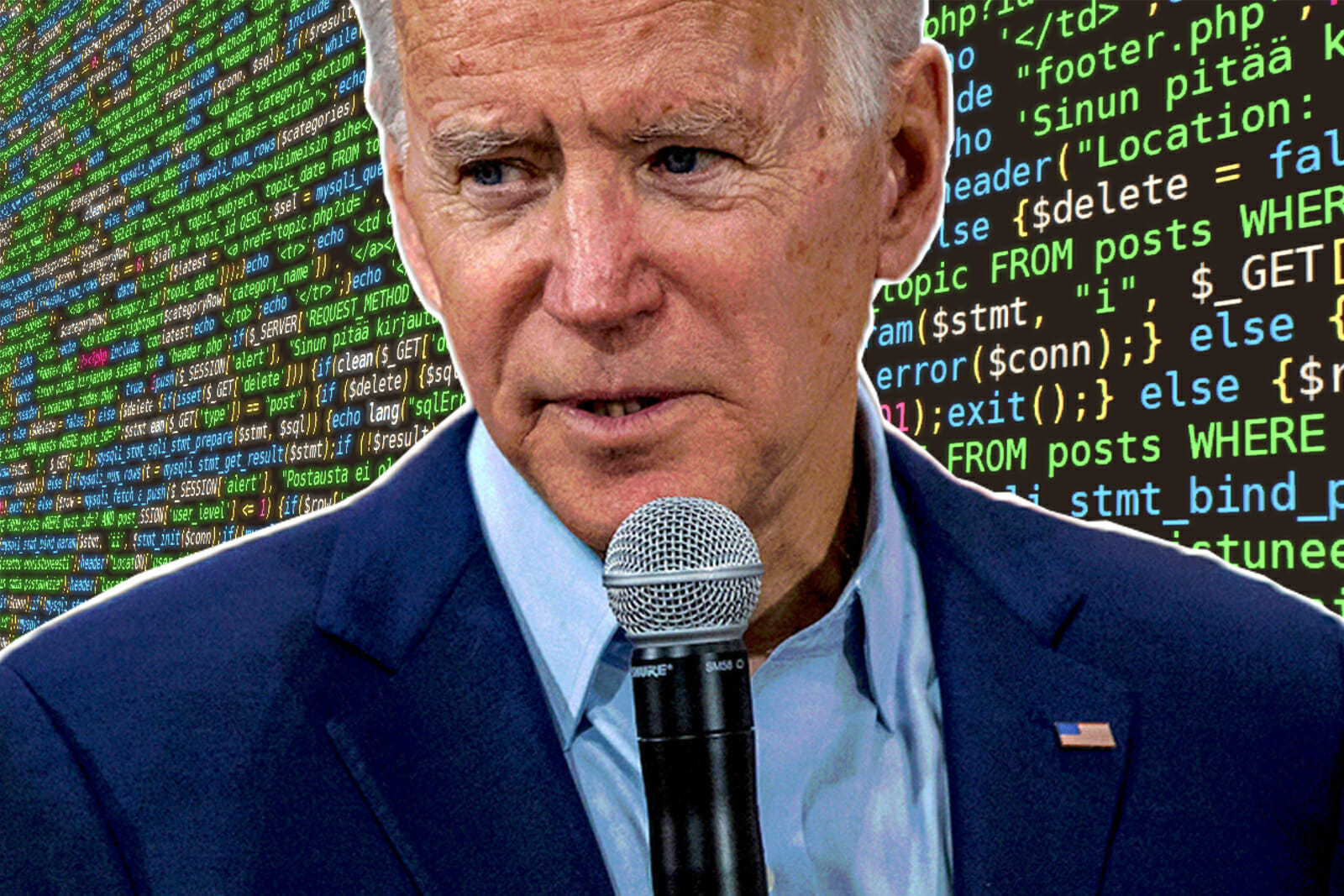
Tech
How Should Biden-Harris Manage Key Tech Policy Challenges?
Alongside COVID-19 planning and economic relief, the Biden administration’s to-do list will be joined by an array of pressing technology policy challenges. Beyond reversing many of the outgoing administration’s policies, the new White House will need to craft a comprehensive technology strategy focused on government modernization, a re-envisioned national innovation policy, and rekindled engagement with democratic partners. Maintaining the present course will erode the country’s position as the global technology and innovation leader.
One of the first direct challenges will involve rehabilitating the U.S. government as an attractive and compelling employer for science and technology professionals. Fiascos like “Sharpiegate” at NOAA, hostility at the EPA, and the termination of a pandemic early warning program months before COVID-19 underscore a departing administration that squandered the country’s science and technology-focused public servants. The stress on this workforce is further magnified at a time when the work of government increasingly relies on attracting deep technical talent that is well-versed in the cutting-edge work occurring across the private sector. Far beyond its stock office productivity tools, companies like Microsoft now support the government’s mission in manners as diverse as detecting biological threats and warding off botnets—to say nothing of the role certain to be played by nimble, government-focused upstarts like Anduril and Palantir. This broad reinvention in how government adopts and deploys technology will demand a technical workforce that is as capable as blue-chip Silicon Valley.
This goal is hindered when policies purportedly intended to “protect American jobs” actually depress the size, caliber, and growth of the STEM talent pool. Immigration policies designed to put an unnecessarily difficult burden on those who wish to come to the U.S. to study and work have had material effect, with year-over-year declines in international student enrollment since 2016 (exacerbated by COVID-19, enrollment this past fall plummeted by 43%). As the pandemic wracked the nation, absurd actions—an executive order “temporarily suspend[ing] immigration,” or guidelines forcing foreign students to leave if their classes went online, a policy later rescinded—contributed to an unwelcoming environment.
In reality, immigrants are vital to the teaching of STEM topics and are more entrepreneurial and innovative than native-born, underscoring the vital role they play in America’s global competitiveness. While the U.S. certainly continues to attract top-notch students, its prestige has been tarnished, ceding its core strength to countries like Canada, Australia, and Germany, which have stepped up their efforts to recruit global talent to their universities and companies.
These twin trends—a taxed federal workforce and an assault on immigration—coincide with an inflection point in the emergence of new technologies. From robotics and blockchain, to longer-horizon moonshots in quantum computing or brain-computer interfaces, the country needs entrepreneurs, researchers, and educators that are second to none to establish American leadership in these domains. More ethically complex issues, like anti-encryption backdoors and AI-powered facial recognition, also call for the most competent voices to be engaged in driving standard-setting and regulation that will stand the test of time, adhere to democratic values, and enable innovation.
Technology will also be an even more central component of Sino-American competition. China hopes to leverage its unmatched manufacturing capacity, human capital, and lower restraints—both ethical and practical—on the collection of data to “catch up and surpass” the U.S. technological dominance. Beijing is also supercharging its state-led R&D initiatives in areas ranging from microprocessors to artificial intelligence, with innovation in these domains channeled toward military modernization as part of a policy of “military-civil fusion.” Private businesses in the country have no choice but to obey the Party’s diktat in these and all areas. These factors represent yet more dimensions in the delicate U.S.-China relationship.
All that said, what is there to be done?
Though careful not to bite off more than it can chew in year one, the administration should delineate those areas where reform is most urgent. The administration should pursue three lines of effort and marshal the forces of government, American society and industry, and the world’s democracies.
First is government. To date, President-elect Biden has shown a willingness to break new ground in how the highest echelons of the Executive branch are composed with the elevation of former Secretary of State John Kerry as special presidential envoy for climate. Like climate change, the technology agenda represents a wide-ranging and complex series of challenges with few silver bullets. A robust whole-of-government approach is necessary to drive research dollars to key priority areas, blunt the impact of “adversarial capital,” and accelerate the government’s modernization and technical talent recruitment efforts. One approach might entail the establishment of a new National Digital Strategy Officer, empowered to organize and advance cross-thematic strategies with the president’s backing. While such a broad remit within the White House does not yet exist, broad support for a recently-established National Cyber Director role evidences an emerging consensus that technology demands a prominent seat at the table.
Beyond Washington, influencing the direction of America’s classrooms and boardrooms must constitute a core component of technology strategy. The country’s immigration policies must be redrawn to reverse recent trends, working to not only attract, but retain, STEM talent. Winding back the prior government’s policies during the first 100 days will be vital in communicating that these self-defeating approaches are firmly in the past. Longer-term, an overhaul of the country’s anachronistic immigration system must take place; current legislation is not reflective of American values or national interest in 2021. It is a national security and economic imperative to make clear that America welcomes its adoptive citizens.
Educational reform cannot be limited to policies affecting foreign students and workers. Incentivizing the pursuit of STEM topics in American schools and universities, with Obama’s Computer Science for All proposal serving as a model, should become a cornerstone of national education policy. Serious consideration should take place for the establishment of a new service academy focused on advanced technical skills for those committed to public service outside of uniform.
While fostering research and entrepreneurship—particularly in so-called “deep tech” with significant upfront costs, limited immediate commercial applicability, and high regulatory scrutiny—is easy to embrace in the abstract, the truth is that some of the most audacious and necessary plans will have high costs. The U.S. government should be directly incentivizing commercial innovation in key technology domains and aiding in the ‘reshoring’ of manufacturing capacity critical to national security and economic competitiveness. Unlike the past, however, the government should be taking a more pronounced role in these investments as shareholders, with positive returns benefiting the public directly and not only private interests. While such a change in policy would need to be carefully structured, at a time of dramatic societal inequality and ballooning deficits, gains from taxpayer-funded bets should be more directly advancing the public good.
Finally, part of the Biden-Harris administration’s rapprochement with traditional foreign partners must include deepened collaboration—both symbolic and material—with democratic states on matters of technology policy and strategy. The new White House will need to work overtime to chart a convincing path on a rules-based world order for technology policy at a time when significant negative factors—the rise of far-right populist leaders, the lingering effects of the Great Recession, the lackluster response to the pandemic in some democracies—have left the free world dispirited. Trailblazing opportunities for collaboration exist as long as there is willpower to marshal them not only in D.C., but places like London, Brussels, Canberra, Tokyo, and Taipei. As U.S. power continues to decline on a relative basis, leveraging the combined capabilities and influence of an alliance of democracies will be increasingly vital.
Accordingly, the Biden administration should be exploring avenues to develop trusted supply chains, deepen exchange between researchers from trusted states, harmonize financial and trade policies, and work as a bloc to set standards and regulation on novel technologies. While disagreements will naturally surface with partner countries—on everything from data governance to the taxation of multinational tech goliaths—there is far more binding these states than pushing them apart.

